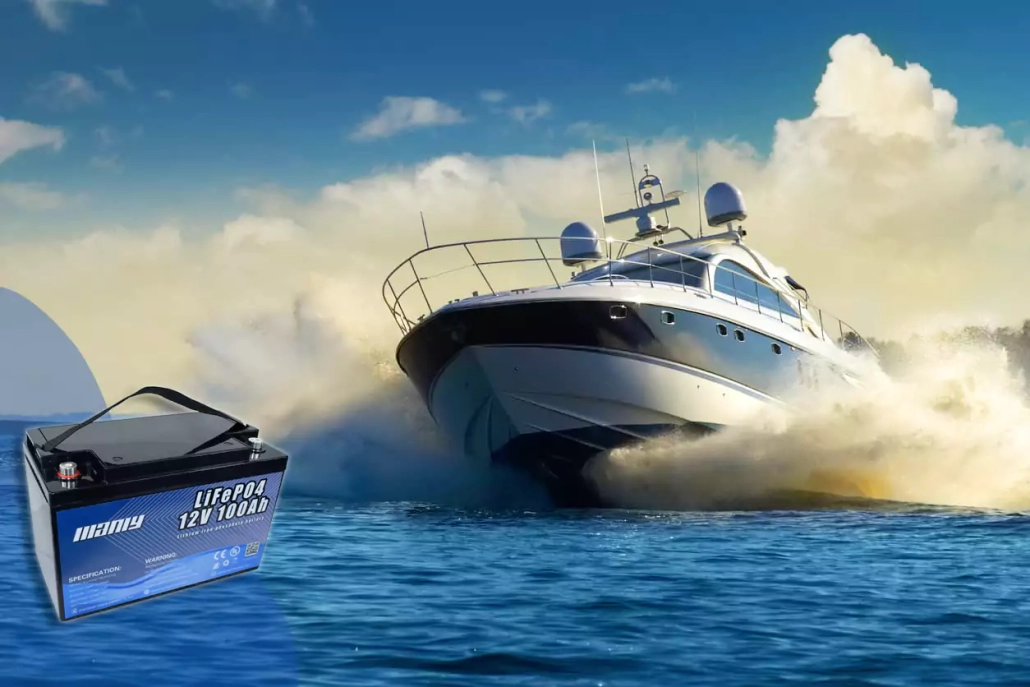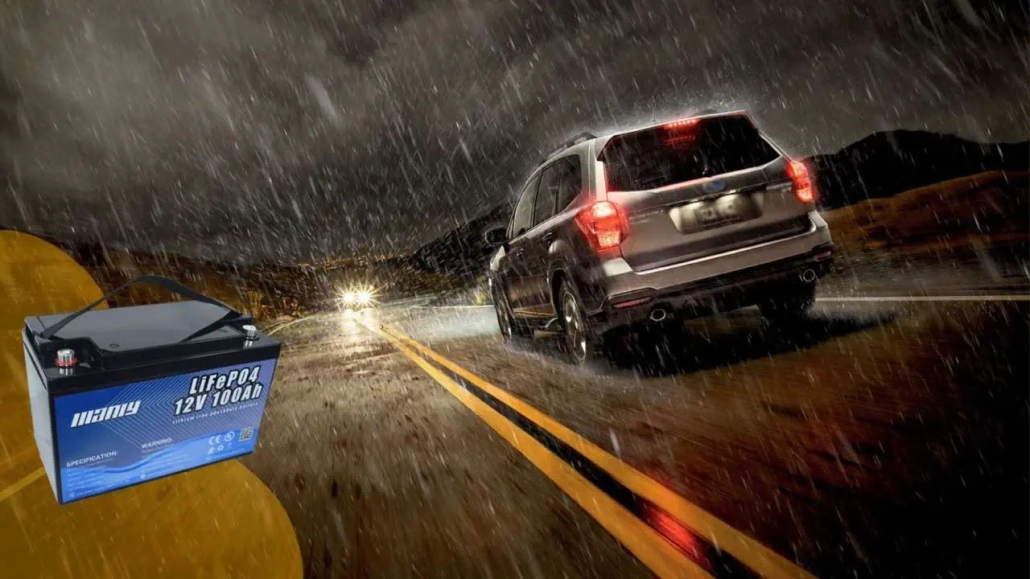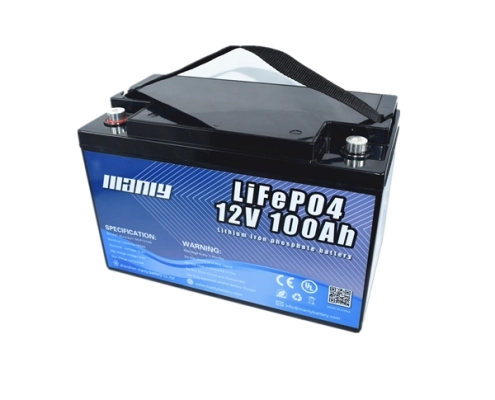Protecting Lithium Battery from Getting Wet in 2024
Table of Contents
- Protecting Lithium Battery from Getting Wet in 2024
- Comparing Lithium and Lead-Acid Batteries
- Water Resistance of Lithium Batteries Explained
- What Happens If a Lithium Battery Gets Wet?
- Impact of Fresh and Salt Water on Lithium Batteries
- Exploring the Risk of Lithium Batteries Exploding in Wate
- Can You Recharge Wet Lithium Batteries?
- Outdoor Storage: Are Lithium Batteries Safe?
- Protective Measures for Lithium Batteries Against Water
- Tips for Waterproofing Your Lithium Batteries
- Lithium Battery Safety on Boats: What You Need to Know
- Immediate Steps to Take If Lithium Batteries Get Wet
- Final Insights on Lithium Batteries and Water Interaction
- Learn More About Battery
Lithium battery has become increasingly popular in recent years, powering everything from our cell phones and laptops to electric vehicles and energy storage systems. Their high energy density makes them well-suited for these applications. However, lithium batteries differ from lead-acid batteries in some keyways – one of them being their interaction with water. So, what happens when lithium batteries get wet? Can they withstand some water exposure, or will they fail catastrophically? This article examines the effects of water on lithium battery chemistry.
Comparing Lithium and Lead-Acid Batteries
Unlike the lead-acid batteries found in traditional gas-powered vehicles, lithium-ion batteries use intercalated lithium compounds as the electrode material. The electrolyte is also different, with lithium salts like lithium hexafluorophosphate or lithium tetrafluoroborate dissolved in organic solvents. This provides performance benefits but also changes how the batteries interact with water.
On the other hand, lead-acid batteries use lead electrode plates immersed in a sulfuric acid electrolyte. This is a very water-compatible chemistry. While liquid water can eventually dilute the sulfuric acid electrolyte and reduce performance, lead-acid batteries generally tolerate minor water ingress or complete submersion without severe consequences.
The differences in battery construction and chemistry lead to vastly different outcomes when lithium-ion and lead-acid batteries encounter water. But what exactly happens when a lithium battery gets wet?

Water Resistance of Lithium Batteries Explained
In general, lithium-ion batteries and water do not mix well. The battery’s organic electrolytes are sensitive to hydrolysis, forming decomposition products that can interfere with proper battery function. Dissolved lithium salts are also highly water soluble and can be washed out of the cell. Finally, the cell materials themselves degrade rapidly in the presence of water. This is especially true for the cathode and anode materials.
For these reasons, lithium battery packs feature extensive sealing and safety mechanisms to prevent water ingress during normal operation. However, accidents happen, and the batteries can become exposed to rain, floods, or immersion. When this occurs, irreversible damage to the cell generally takes place.
Upgrade your device’s safety with MANLY Battery’s high-performance, safe lithium batteries. Enjoy peace of mind with a 10-year warranty and top-notch IP68 waterproof protection. Don’t wait, shop now and safeguard your devices against water damage!
What Happens If a Lithium Battery Gets Wet?
When lithium batteries come into contact with liquid water, even in small amounts, several detrimental processes begin:
1. Hydrolysis of Electrolyte Solvents
The organic carbonates like ethylene carbonate (EC) and dimethyl carbonate (DMC) used as solvents are sensitive to hydrolysis in an aqueous environment. The solvent molecules react with water, breaking down into products like ethylene glycol and methanol. This depletes the electrolyte while generating byproducts that can impede lithium ion transport.
2. Dissolution and Loss of Lithium Salts
Lithium salts like LiPF6 and LiBF4 have high water solubility. When exposed to water, these lithium salts rapidly dissolve and are washed out of the cell. This lowers ionic conductivity and unbalances cell stoichiometry. Excess lithium loss can lead to plating issues.
3. Cathode and Anode Degradation
Cathode materials like lithium cobalt oxide (LiCoO2) and graphite anodes breakdown upon interaction with liquid water or hydrolysis products, resulting in capacity loss. This can occur even if the water doesn’t penetrate deep inside the cell. Side reactions with hydrolysis products further accelerate degradation.
4. Internal Short Circuits
If enough water collects inside the battery enclosure, it can bridge the electrodes and create internal short circuits. This leads to intense localized heating and failure. It only takes a very small amount of water to induce shorting.
The combined effects of electrolyte decomposition, lithium salt dissolution, electrode damage, and short circuits mean that lithium cells fail rapidly when contaminated with water. Total failure may occur instantly or over a period of hours/days depending on water exposure levels.
Impact of Fresh and Salt Water on Lithium Batteries
An important consideration is whether the water is plain fresh water or a saline salt water solution. Both fresh water and salt water will initiate hydrolysis, lithium salt dissolution, and component degradation processes. However, salt water introduces the additional risk of metal corrosion along with electrolyte decomposition.
This occurs because the dissolved sodium chloride salt generates chloride ions when dissolved in water. Chloride ions can then corrode battery terminals and interconnects made of conductive metals like aluminum and copper. Extensive corrosion eventually leads to electrical isolation of cell components.
So, while fresh water is detrimental for lithium batteries, salt water exposure is even more damaging due to simultaneous corrosion effects. This is why lithium batteries subjected to seawater flooding require rapid replacement. The combination of hydrolysis, lithium salt loss, material degradation and corrosion are too extreme for the batteries to handle.
Exploring the Risk of Lithium Batteries Exploding in Wate
Lithium batteries suffering water exposure do not generally explode underwater as this requires an ignition source and oxygen. However, when lithium batteries are electrically abused or experience internal short circuits from water contamination, rapid heat and gas generation can cause them to rupture violently, even if submerged.
For an explosion to occur, you need fuel, heat, and an oxidizer. In lithium cells, the flammable organic electrolytes act as the fuel source in the event of failure. But normally submerging defective lithium batteries in water cuts off oxygen supply and dissipates damaging heat buildup, impeding explosions before they happen.
That said, lithium chemistry is highly reactive and uncontrolled reactions between cell components can self-supply significant heat and gas release to damage batteries from the inside. Shorting from water bridging electrodes produces extremely high localized currents and temperatures. This aggressive self-heating effect can essentially “boil” surrounding water and compromise batteries in seconds.
So, despite the apparent fire suppressing properties of water, defective lithium batteries may still vent hot gases or burst open at depth. Such events endanger nearby batteries by spreading contamination. For this reason, submerged energy storage or electric vehicle battery packs require isolation and monitoring after flooding incidents even though direct “explosions” are unlikely in water. However, you should still be careful when you are dealing with a wet battery. That’s why you need to get a waterproof battery for applications where you come into contact with water.
Ultimately submersion cannot be counted on to fully inhibit damaged lithium batteries from spewing flammable electrolytes or rupturing violently underwater due to self-heating issues. But surface lithium battery fires are indeed extinguished effectively by water dousing. There the water absorbs heat and displaces oxygen to suppress the combustion process. So, responsibility boils down to preventing lithium battery water exposures in the first place rather than relying on water immersion to passively control failures.
Can You Recharge Wet Lithium Batteries?
Attempting to recharge lithium batteries after water exposure presents substantial fire and safety issues due to internal damage and should never be attempted outside controlled environments by qualified personnel. However, with proper handling and testing, a few wet lithium cells may potentially be salvaged from mildly exposed battery packs at specialized facilities.
The first rule is avoiding recharging wet batteries in situ or while still installed in consumer devices and vehicles. When lithium batteries get wet, internal shorts, electrolyte decomposition, and electrode damage are likely present and pose recharging risks. Instead, cautiously remove and isolate affected cells/packs.
In a laboratory setting, lightly sprinkled cells might be revived after rigorous analysis provided core pack voltages are stable and internal resistances haven’t spiked excessively. This requires carefully discharging affected packs to safe levels before inspecting each cell individually. Cells exhibiting abnormal voltages, swollen cases, high internal resistances, or other markers of failure should be discarded and safely recycled.
Surviving cells warrant further testing to ascertain permanent damage. If capacities remain within normal ranges and consistent charging profiles are demonstrated in monitoring stations, then very careful recharging could be undertaken under controlled conditions. However, most flooded lithium batteries won’t measure up or remain functional through initial discharge cycles.
Consumer recharging attempts often end badly given lack of monitoring and safety precautions. Damaged batteries pose explosion and fire hazards when rejuvenation is forced. Nonexperts recharging flooded batteries risk severe property destruction and personal harm. Don’t do it!
Industry salvage efforts are complicated too, and the costs often exceed replacement pack prices. Companies like Tesla remotely disable flooded vehicle packs because home repowering is too dangerous after uncertain water interactions. Lithium batteries are best kept moisture-free to avoid recharging risks altogether. While small recoveries are situationally possible, wet lithium batteries largely fail irreversibly. Don’t gamble with fire and toxic fumes. When in doubt, recycle responsibly.

Outdoor Storage: Are Lithium Batteries Safe?
Unprotected lithium batteries left enduring outside environmental conditions risk various degradation routes from cold, heat, humidity, and precipitation. While lithium chemistries are resilient, outdoor use hastens aging, capacity decline, and eventual failure if cells aren’t appropriately insulated and maintained.
Lithium cobalt oxide, manganese oxide, nickel manganese cobalt oxide, and similar cathode blends are intrinsically stable within modest temperature fluctuations. Likewise, graphite, silicon graphene, lithium titanium oxide and alternate anode materials hold up against routine thermal stress when cells stay sealed. However extreme heat or cold readily ages key electrolyte additives and can irreversibly alter electrodes through particle fracturing, metal dissolution, or chemical rearrangements that reduce capacity.
These aging mechanisms quicken when batteries confront outdoor humidity and precipitation too. Lithium salts readily dissolve and hydrolyze away when exposed to liquid water as covered in previous sections. Gradual moisture ingress also seeds insidious damage through low-level hydrolysis and intermittent shorting that erodes performance over weeks. Storage conditions should remain reliably dry to prevent such issues.
Fortunately, properly constructed lithium packs incorporate sufficient weather resistance for outdoor use through sturdy housings and hermetic sealing measures. E-bikes, electric vehicles, and portable power stations often leverage lithium technology without issue. Security cameras, emergency locators and other devices endure seasons outdoors as well when outfitted with quality cells having adequate insulation and protective circuitry.
Still, all lithium batteries dwindle faster left indefinitely outside relative to maintaining ideal storage conditions indoors. Key considerations for longer-lifespan outdoor deployment include shielding cells from precipitation using well-sealed enclosures, selecting intrinsically safe/stable chemistries less prone to thermal runaway issues, incorporating battery management systems that handle charge/discharge properly through ambient temperature swings, and periodically cycling cells to mitigate aging in lieu of prolonged rest.
With prudent selection and preparation, lithium batteries prove hardy enough for temporary exterior applications like powering outdoor events. But long-term stationary use outside risks accelerated decline without sufficient safeguards against humidity, rain/snow contact, extreme heat, and extreme cold. Outdoor reliability hinges on robust housing and electronics that modulate cell activity across environments. When those fail, lithium battery lifespans shrivel.
Protective Measures for Lithium Batteries Against Water
Guarding against lithium battery water damage centers on enacting multiple layers of protection since no solitary step fully eliminates aqueous risks. Carefully selecting devices and batteries engineered to repel moisture, handling cells properly to avoid direct exposure in the first place, and responding appropriately if flooding happens together keep lithium technology safely reliable.
Seeking intrinsically water-resistant devices using reputable batteries with appropriate safety certifications constitutes the first line of defense. Trusted brands design quality products that isolate lithium cells from humidity while mitigating damage should ingress occur. Features like hermetic seals, polarity protection, charge controllers, thermal cut-offs, current fuses, fire retardant additives, and reinforced casings all help regulate failure risks.
IP water protection ratings signify how products withstand liquid ingress too, with higher numbers indicating enhanced sealing against moisture. IP67 designs tolerate brief immersion for instance while IP65 ratings handle low-pressure jets. Check ratings when purchasing lithium-powered items intended for uncontrolled conditions near bodies of water where flooding may transpire, choosing suitable products for the application.
Beyond seeking water-resistant equipment, refraining from utilizing lithium batteries during ongoing precipitation or before components dry after exposure represent basic safe-handling tenets. Don’t attempt to jumpstart wet vehicles with portable jump starters for example. Know your devices’ limitations and keep them operating within prescribed conditions to preserve internal battery health.
Additionally, store lithium cells properly when not in use rather than haphazardly tossing them in random drawers or leaving them resting in flooding prone areas outside. Keep storage locations reliably dry and accessible for inspection. Periodically check your lithium batteries for any leakage or damage issues needing recycling. This prevents fluid accumulations or unnoticed water contact degrading batteries until charging or operation.
Finally, immediately stop utilizing and safely isolate lithium equipment showing symptoms of water exposure like puffing or corroded terminals. Handles swollen devices cautiously and avoid recharging a wet battery outside professional facilities. Seek recycling centers to discard flooded cells and packs appropriately if revival efforts prove impractical or too dangerous to merit attempting. With prudence and responsible lithium battery selection, handling, storage, and recycling, aqueous risks remain reliably marginal.
Tips for Waterproofing Your Lithium Batteries
Since lithium batteries and water don’t mix well, properly waterproofing cells and packs is key for applications from boating to outdoor solar power setups. While fully immobilizing electrolytes under every condition is impractical for most consumer batteries, prudent steps mitigate aqueous risks.
First, select reputable lithium cells or devices with adequate internal barriers to moisture ingress. Cells enlisted for marine travel or alfresco solar energy storage should boast certified water-resistance commensurate with deployment conditions. IP65 or IP67 ratings denote survival after immersion between 1-3 feet for 30 minutes for example.
Additionally, choose lithium battery chemistries optimized for stability like lithium iron phosphate (LFP) over riskier options. Encase cells in durable hydrophobic barrier sleeves offering redundant protection even if housings crack. Some sleeves endure 30+ minutes in 1 meter depth.
For larger installations, incorporate marine-grade waterproof battery boxes to secure multiple lithium packs, similar to weatherproof deck boxes shielding lead-acid batteries. Monitor cells internally using a battery management system to isolate and report issues immediately.
When suitable for the application, conformal coatings added to circuit boards further enhance water protection without totally immobilizing cells during thermal expansion and discharge cycles. However, consult manufacturers before applying any sealants directly to cells or packs as certain coatings inadvertently degrade battery materials when improperly matched.
Ultimately, integrating layers of water defiance both around lithium packs through ruggedized cases and individual cells via nanocoating or sleeve barriers delivers comprehensive, real-world aqueous defenses without unduly hindering performance. Once you do this, you will not have to deal with the frustration of a wet battery.
Lithium Battery Safety on Boats: What You Need to Know
Lithium battery adoption in the competitive boating industry continues rising as electric propulsion and house loads supplement or supplant legacy lead-acid banks. However, heightened flammability risks from lithium cells meeting water warrants careful installation and maintenance precautions unique to the marine environment.
Interactions between lithium battery electrolytes and water produce exothermic reactions that can ignite given an oxygen source. Flooding also degrades battery health, with soaked cells swelling dramatically and venting hot gases which endanger nearby packs. So, specifying waterproof battery compartments, implementing fire suppression systems attuned to lithium tech, and enacting redundancy and monitoring to curtail single-point failures are vital.
All lithium energy storage scattered throughout vessels requires robust sealing against humidity, splashes or outright swamping. Employing marine-grade IP67 battery cases and sleeves while sealing enclosures hosting li-ion banks protects against deterioration or uncontrolled ignition sources whether docked, anchored, or underway.
Additionally, connecting multiple lower-capacity li-ion packs in parallel disperses risks versus singular high-energy masses prone to violent failures. Integrated battery monitoring provides early warning for emerging issues like swelling and premature decay as well.
Backup APW manual releases and external pump interfaces should also be installed along designated flooding boundaries to balance li-ion automation, facilitating emergency Crew response if water triggers thermal runoff.
While heavy weather or collisions subjecting lithium batteries to uncontrolled aqueous environments pose innate risks, deliberate redundancy, compartmentalization, and fire readiness tailored for maritime duty demonstrably improve safety. When grading boats lacking foresight in li-ion placement, retrofitting may prove essential before setting sail.
Immediate Steps to Take If Lithium Batteries Get Wet
While liquid contacting lithium batteries poses legitimate safety issues from potential leakage, fires, or explosions, immediately panicking and haphazardly handling wet cells tends to exacerbate, not alleviate, ostensive risks. Instead, respond deliberately by safely isolating affected devices, avoiding recharging flooded equipment, and disposing damaged batteries properly.
The first priority is preventing personal harm above property loss or restoration efforts. So don’t unnecessarily endanger yourself retrieving flooded lithium-powered belongings without appropriate protections in disasters scenarios. Safely cutoff and distance yourself from shorting, smoking or swollen batteries giving off intense heat signaling uncontrolled reactions.
Avoid directly contacting leaking electrolytes on skin or eyes as most lithium battery liquid solvents and salts prove irritating and toxic, capable of causing lasting tissue damage in accidents. Seek emergency medical care if exposure occurs. When possible, utilize household gloves and eye protection when handling damaged lithium battery packs to minimize threats.
Also refrain from attempting to restart, recharge or otherwise energize waterlogged devices powered by lithium batteries outside professional facilities since damaged cells often explode or erupt in flames upon forcing current flow. Similarly, don’t hastily discard swollen lithium batteries with household waste since landfill disposal risks further contamination and reactions.
Instead, gently place damaged cells in stable insulated containers like stainless steel mixing bowls kept outside living quarters and contact emergency services for safe materials transport methods in your municipality. Avoid piling damaged cells tightly together or leaving unattended once stable and isolated.
When encountering flooded lithium batteries in vehicles or renewable energy systems, engage manual shutdown/isolation procedures appropriate for specific equipment to stem collateral injuries or property destruction if cells begin actively venting or erupting. Wait out irregulated battery events safely away from effected systems.
Through levelheaded isolation and containment tactics supplemented by protective gear, quick-thinking lithium battery owners reduce mishaps when the unexpected occurs. While soaked lithium tech can initiating damaging meltdowns, smart responses curb risks without panic. Stay safe, get away, and call for help.
Final Insights on Lithium Batteries and Water Interaction
As you can see, lithium-ion batteries and water contact create a recipe for cell failure. Hydrolysis, dissolving lithium salts, electrode/electrolyte breakdown, short circuits, and potential metal corrosion mean lithium cells cannot withstand water exposure. Lithium battery packaging is designed to prevent moisture ingress, but accidents happen, and water contamination usually results in irreparable battery damage. While occasional minor splashing may not kill lithium cells outright, it’s best to keep them as dry as possible for optimal performance and safety.





